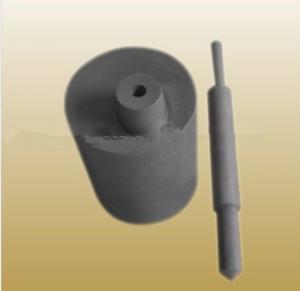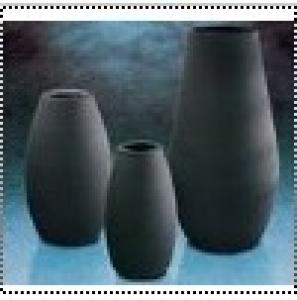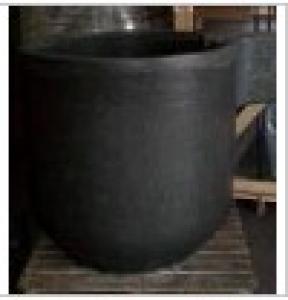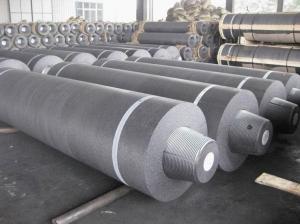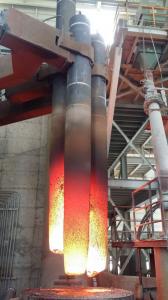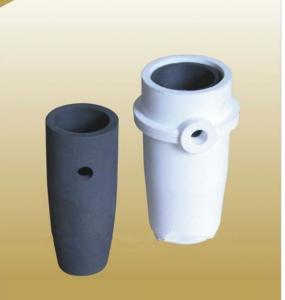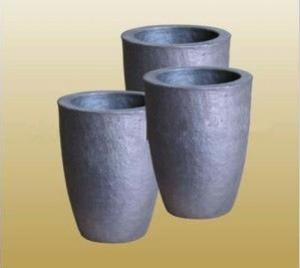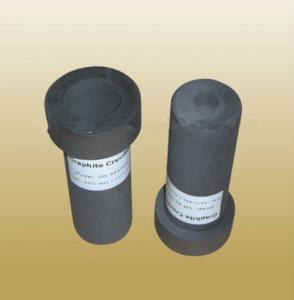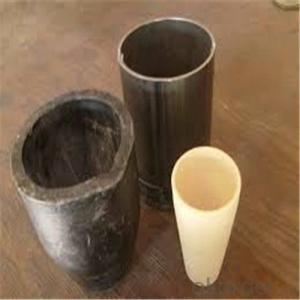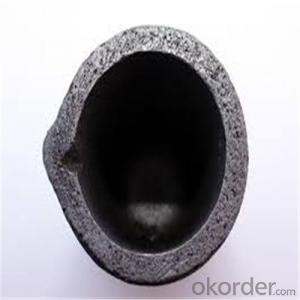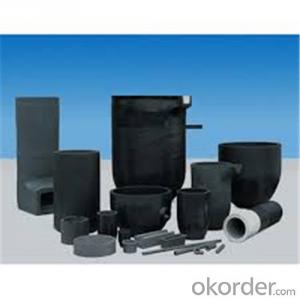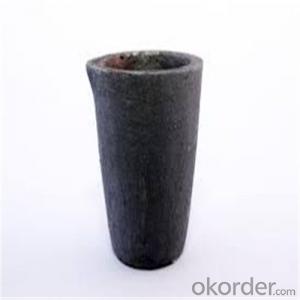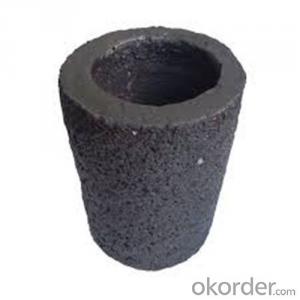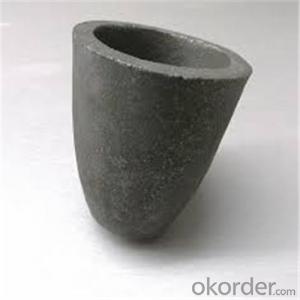High Quality Special Graphite Products
- Loading Port:
- China Main Port
- Payment Terms:
- TT or LC
- Min Order Qty:
- 50 Sets set
- Supply Capability:
- 3000 Sets per Month set/month
OKorder Service Pledge
Quality Product, Order Online Tracking, Timely Delivery
OKorder Financial Service
Credit Rating, Credit Services, Credit Purchasing
You Might Also Like
Detailed Product Description
Special Shaped Graphite products are used in various industrails,including graphite crucible and graphite seal
Special Shaped Graphite products are used in various industries.it can be used as sealing in machinery as carbon graphite material, such as the quiet ring or the moving ring, doctorblade, piston-ring, sealing expansionring and the raw materias.
- Q:How is a graphite crucible cleaned after use?
- A graphite crucible can be cleaned after use by following a few simple steps. Firstly, it is important to allow the crucible to cool down completely before attempting to clean it. Once cooled, any remaining solid residues can be gently scraped off using a non-metallic tool such as a plastic scraper or a wooden stick. It is important to avoid using metal tools as they can scratch or damage the graphite surface. After removing the solid residues, the crucible can be washed with warm water and mild detergent. It is advisable to use a soft sponge or cloth to gently scrub the inside and outside surfaces of the crucible. This will help to remove any remaining impurities or contaminants. Once the crucible has been thoroughly cleaned, it should be rinsed with clean water to remove any detergent residue. It is crucial to ensure that the crucible is rinsed thoroughly to prevent any chemicals from contaminating future experiments or processes. After rinsing, the crucible should be dried thoroughly before storing or reusing. It is recommended to air-dry the crucible in a well-ventilated area or use a clean, lint-free cloth to wipe it dry. It is important to ensure that the crucible is completely dry to prevent any moisture from causing corrosion or other damage. In summary, cleaning a graphite crucible involves scraping off solid residues, washing with warm water and mild detergent, rinsing thoroughly, and ensuring complete drying before storing or reusing. By following these steps, the crucible can be effectively cleaned and maintained for future use.
- Q:How can food detect heavy metals and microbes?
- The detection methods of heavy metals in foods include colorimetry, turbidimetry, chromatography, spectrophotometry, electrochemical analysis, neutron activation analysis, etc.. The relevant national standards all specify the content determination method of heavy metal elements in food. The following are national standards for detection of lead, cadmium, mercury, and arsenic in food products.
- Q:How to calculate the loss of aluminum slag melting?
- Look at the size of aluminum slag, big saw recovery rate is high, small saw fine chip is low.
- Q:Can graphite crucibles be used for melting composite materials?
- Yes, graphite crucibles can be used for melting composite materials. Graphite crucibles have excellent thermal conductivity and high melting point, making them suitable for melting a wide range of materials including composites. However, it is important to consider the specific requirements of the composite material being melted to ensure compatibility and avoid any potential reactions or contamination.
- Q:Are there any specific cleaning agents or methods recommended for graphite crucibles?
- There exist specific cleaning agents and techniques that are suggested for the purpose of cleaning graphite crucibles. Graphite crucibles are commonly employed in applications involving high temperatures, such as metal melting, and they can accumulate various impurities over time. A commonly suggested approach to clean graphite crucibles involves a combination of mechanical cleaning and chemical treatment. In mechanical cleaning, a soft brush or cloth is utilized to eliminate any solid debris or residue from the crucible. It is important to avoid using abrasive materials or engaging in harsh scrubbing, as this may result in damage to the crucible. Following mechanical cleaning, a chemical treatment is often required to remove any remaining impurities. Acidic solutions, for example hydrochloric acid or sulfuric acid, are frequently employed in the process of cleaning graphite crucibles. These solutions possess the capability to dissolve and eliminate organic and inorganic contaminants. However, it is crucial to be aware that handling and working with acid solutions can be hazardous and necessitates caution. It is recommended to wear personal protective equipment, such as gloves and goggles, and ensure adequate ventilation. Furthermore, it is of utmost importance to adhere to the manufacturer's instructions and guidelines for cleaning graphite crucibles. Certain crucibles may have specific requirements or limitations with regards to cleaning methods and agents, and it is vital to comply with these recommendations to prevent any damage to the crucible. In conclusion, while there are specific cleaning agents and techniques that are recommended for graphite crucibles, it is vital to exercise caution, follow safety guidelines, and consult the manufacturer's instructions to ensure proper cleaning and maintenance of the crucible.
- Q:How to make the aluminum liquid in the round graphite crucible solidified without holes in the middle?
- Until the expected weight of ycl35 is reached. Appropriate mixing and Bahui melting process.
- Q:Can a graphite crucible be used for heat exchanger applications?
- Using a graphite crucible for heat exchanger applications is not possible. A crucible serves as a container for holding and melting materials at high temperatures, typically used in laboratories or industrial settings. Its purpose is to endure extreme heat and chemical reactions, but it is not designed for efficient heat transfer. In contrast, a heat exchanger is a device explicitly created for transferring heat between two fluids or between a solid surface and a fluid. It is constructed with specific materials and structures to optimize heat transfer efficiency. Graphite, despite its good thermal conductivity, is not an ideal material for heat exchangers due to its limitations in mechanical strength, pressure resistance, and corrosion resistance. Therefore, it is advisable to utilize materials specifically designed for heat exchanger applications, such as metals like copper, stainless steel, or titanium. These metals possess superior thermal conductivity and can withstand the high pressures and corrosive environments that are often encountered in heat exchanger operations.
- Q:Can a graphite crucible be used for melting rare earth metals?
- Yes, a graphite crucible can be used for melting rare earth metals. Graphite is a highly suitable material for high-temperature applications due to its excellent thermal conductivity and resistance to thermal shock. It can withstand the high temperatures required to melt rare earth metals without melting or reacting with them. Additionally, graphite crucibles are typically chemically inert, which means they will not contaminate the molten rare earth metals, allowing for a clean and reliable melting process. However, it is important to ensure that the graphite crucible is specifically designed for high-temperature applications and is of high quality to ensure optimal performance and longevity.
- Q:Can graphite crucibles be used for melting food-grade materials?
- Using graphite crucibles for melting food-grade materials is not recommended. Graphite, a type of carbon, has the potential to release impurities or contaminants when exposed to high temperatures. If these impurities are ingested or come into contact with food, they can be harmful. To ensure the safety and quality of the end product, it is advised to utilize food-grade materials like stainless steel or ceramic when melting food-grade materials.
- Q:Can graphite crucibles be used for powder metallurgy?
- Yes, graphite crucibles can be used for powder metallurgy. Graphite is an excellent material for high-temperature applications and is commonly used in powder metallurgy processes. Graphite crucibles have a high melting point and excellent thermal conductivity, making them ideal for melting and holding metal powders during sintering or melting processes. Additionally, graphite crucibles have good chemical resistance, allowing them to withstand the corrosive effects of certain metal powders. Overall, graphite crucibles are a reliable and efficient choice for powder metallurgy applications.
Our products are sold all over the country, and exported to America, Germany, Spain, India, Japan and Korea. Besides, we have strict management and advanced production technology.
We promise we will win more clients and a larger market with honest commercial credit, high quality of products, competitive price and good service.
1. Manufacturer Overview |
|
|---|---|
| Location | Inner Mongolia,China (Mainland) |
| Year Established | 2006 |
| Annual Output Value | US$2.5 Million - US$5 Million |
| Main Markets | 7.14% North America 7.14% South America 7.14% Eastern Europe 7.14% Southeast Asia 7.14% Africa 7.14% Oceania 7.14% Mid East 7.14% Eastern Asia 7.14% Western Europe 7.14% Central America 7.14% Northern Europe 7.14% Southern Europe 7.14% South Asia 7.14% Domestic Market |
| Company Certifications | |
2. Manufacturer Certificates |
|
|---|---|
| a) Certification Name | |
| Range | |
| Reference | |
| Validity Period | |
3. Manufacturer Capability |
|
|---|---|
| a)Trade Capacity | |
| Nearest Port | Xingang,Tianjin |
| Export Percentage | 31% - 40% |
| No.of Employees in Trade Department | 21-50 People |
| Language Spoken: | English, Chinese |
| b)Factory Information | |
| Factory Size: | 1,000-3,000 square meters |
| No. of Production Lines | 7 |
| Contract Manufacturing | 1,000-3,000 square meters |
| Product Price Range | Low and/or Average |
Send your message to us
High Quality Special Graphite Products
- Loading Port:
- China Main Port
- Payment Terms:
- TT or LC
- Min Order Qty:
- 50 Sets set
- Supply Capability:
- 3000 Sets per Month set/month
OKorder Service Pledge
Quality Product, Order Online Tracking, Timely Delivery
OKorder Financial Service
Credit Rating, Credit Services, Credit Purchasing
Similar products
New products
Hot products
Related keywords


